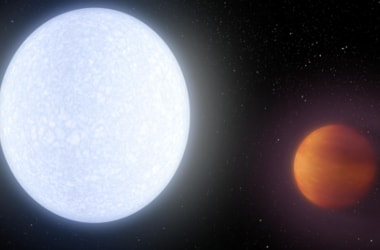
Astronomers led by Ohio state university researchers discovered the hottest giant planet named KELT-9b.
This exoplanet is hotter than most stars - the finding was published on June 5, 2017
KELT 9b is regarded as a hybrid planet star - it has the mass of a planet and the atmosphere of a star.
KELT 9b was discovered in 2014 as astronomers spotted the shadow as it crossed the face of its host star 650 light years away from Earth in the constellation of Cygnus.
The planet was so close to the star that surface temperature reaches more than 4300C.
This makes it the hottest giant planet ever found.
Astronomers discovered this planet using two robotic telescopes Kilodegree Extremely Little Telescope in Arizona and Sutherland to north of Cape Town in SA.
The twin telescopes focused on a star called Kelt-9 which at 10000 degrees C is nearly twice as hot as the sun. The observations revealed a regular dimming of starlight reaching Earth, the signature of a giant planet that was moving around it once every one-and-a-half days.
KELT 9b: Know More- KELT-9b is estimated to be roughly 3777 degrees Celsius on the dark side and 4327 degrees C on the star-exposed side.
- This makes KELT-9b almost 20 per cent hotter than the next-most-boiling exoplanet WASP-33b. KELT-9b receives 700 times as much solar radiation as WASP-33b, which is similar to the glow of an entire K-type star, the second coolest type and is more than enough to break down molecules to their constituent atoms.
- The new planet’s scorching temperature is due its parent star KELT-9 which falls in the A-type bracket of stars, the third-hottest category.
- It is the seventh star of its classification to be found with an exoplanet and at roughly 300 million years old. KELT-9b is surprisingly puffy, given that its mass is almost three times Jupiter’s. KELT-9b is 2.8 times more massive than Jupiter, but only half as dense.
- For reasons no one fully understands yet, the planet also orbits its star from pole to pole, rather than around the equator as would be expected.
- The planet is tidally locked to its star as the moon is to Earth.
- One side of the planet is always facing towards the star, and one side is in perpetual darkness. Molecules such as water, carbon dioxide and methane can’t form on the dayside of the planet as it is bombarded by too much ultraviolet radiation.
- The discovery of KELT-9b might encourage more researchers to go into the depths of other planets on the opposite end of the typically researched spectrum.